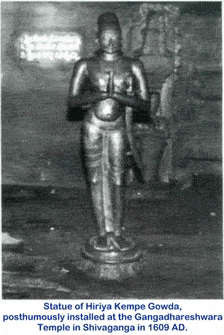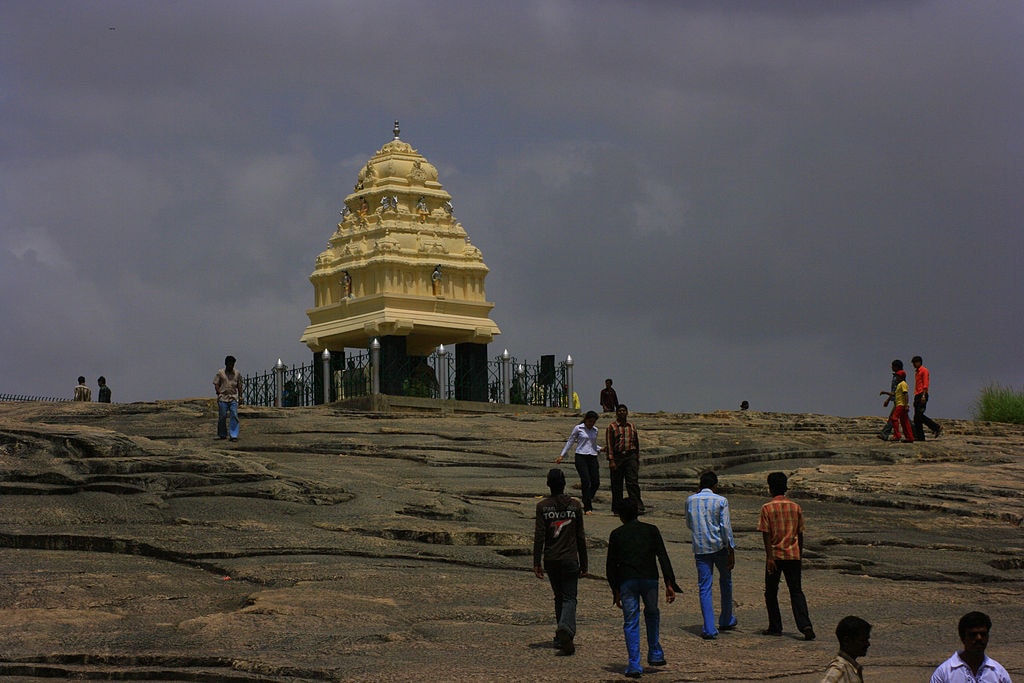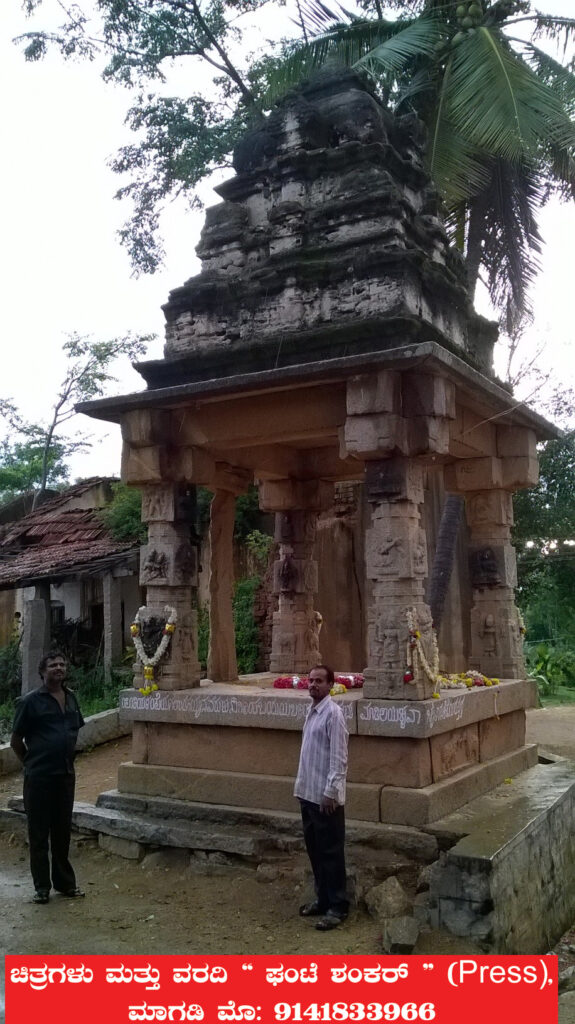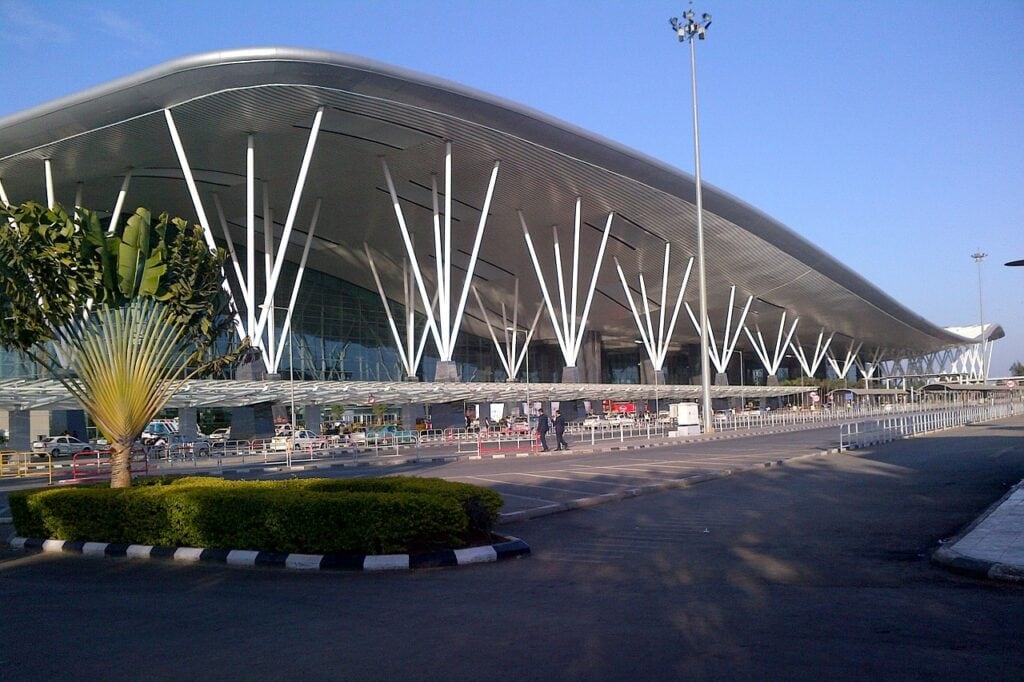From ancient to modern Indian History there were many kingdoms happened accross timeline. But few of them formed a giant kingdom which known as empire. As I said it is difficult to merge kingdoms and form intact empire. Because to create empire strong leadership used to be needed along with support of regional rulers.
Harihara I and Bukka Raya I founded the kingdom of Vijayanagar. It also became famous empire expanding its boundaries under their rule. Later it was flourished to its zenith under rule of Sri Krishnadevaraya.
It became possible due to leadership of Krishnadevaraya and unity of regional powers who accepted supremacy of Vijayanagar. Kempegowda was a famous regional ruler of Bengaluru. Yes, he was one who responsible for the current metro city of Banglore. So lets dive into biography of Kempegowda.
Introduction
Every city had its identification. Some cities have their known because of their pollution, some cities identified because of crimes. In contrast, we knew some cities due to its rich past.
Bangalore is one of the city we knew for its rich history. The foundation of the current city was built by Kempegowda about 300 years ago.
He was a visionary leader who made design of the city. It is one reason behind the flourishing city we see today. Now you definitely want to know more about the history of Kempegowda, right?
Don’t worry about searching here and there, because here I am going to cover the hidden secrets and untold tales that will leave you amazed.
Born in a time when Bangalore was a small town, Kempegowda had a solid determination and a vast vision. He altered the small settlement into a thriving city.
This biography shows the skill of Kempegowda in planning defenses, infrastructure, and water systems of the city.
His grand vision went beyond the structures and involved in the creation of a society that fostered growth, prosperity, and cultural richness.
Brief Information of Kempegowda
| Factors | Information |
|---|---|
| Full Name | Nadaprabhu Hiriya Kempegowda |
| Identity | Ruler and founder of Bengaluru city |
| Birth | Jun 27, 1510 CE at Bengaluru |
| Parents | Father: Vokkaliga Kempananje Gowda |
| Children | Sons: Gidde Gowda, Immadi Kempegowda |
| Reign | For 46 years, from 1513 AD to 1559 CE |
| Education | Near Hesaraghatta village in Aivarukandapura (Aigondapura) |
| Battles | Battle of Sivaganga |
| Death | 1569 CE |
Introduction
Name of Kempegowda was “Nadaprabhu Hiriya Kempegowda.” He was the famous feudal rex under Vijaynagar Kingdom.
“Kempananje Gowda” was the father of Kempegowda. His father named Vokkaliga Kempananje Gowda ruled for 70+ years on Yelhankanadu.
He was the inheritor of Morasu Gowda clan. He ruled for 46 years from 1513 AD to 1559 CE. Emperor Sri Krishnadevaraya honored him with title “Chikkaraya.”

Kempegowda Jayanti
He was born on day Jun 27, 1510 CE. So every year, his birth anniversary celebrated in Bengaluru.
Birthplace of Kempegowda I- Yelhankanadu
He was born in a vibrant heritage town named Yelhankanadu. This city had a lengthy Historical Background. He worked as a feudatory and head of Yelhankanadu. Town Yelhankanadu located in Karnataka, and it was an integral part of the Vijaynagar Empire.
This city had called “Ilaipakka” during the reign of Cholas and Gangas. Hoysalas rulers changed the name of Ilaipakka to Elahakka. After some period, this city name replaced with Yelhankanadu.
After that, Kempegkowda I built the beautiful city of Bengaluru. Subsequently, he shifted his capital from Yelhankanadu to Bengaluru.
Kempegowda accepted the domination of the Vijaynagar Empire but acted as a separate ruler. He would always be eager to help his people. He showed strong leadership skills from his childhood. He took his education for nine years from Aivarukandapura (Aigondapura), a village near Hesaraghatta.
Once, he went for hunting along with his minister Veeranna and Advisor Gidde Gowda. They were going towards Shivanasamudra (near Hesaraghatta) from Yelahanka. Where he got an idea about establishing a large and planned city, he imagined the city with the fort, tanks, cantonment, temples, etc. The town would be the center of various professionals and trades.
Kempegowda tower History

After determining the four corners of the town. One of the four towers built by his son called “Gidde Gowda.”
Kempegowda tower has resided on top of a hillock inside Lalbagh. We recommend this place to History Lovers.
Bangalore Fort
Kempegowda won the Sivaganga territory, which located 48 km (30 miles) from Bengaluru. Later, he acquired the Domlur region. Town of Domlur situated on the road of Banglore city to old Bangalore airport. This dense forest region he has chosen for the building of the fort.
During that time, Achyutharaya was the Emperor of the Vijaynagar Empire. He took necessary imperial permissions from Achyutharaya. After that, he built the massive Bangalore Fort in 1537 CE.
History of Bengaluru
| Century | Prevailing name |
|---|---|
| 9th | Bengaval-uru (city of guards) |
| 12th | Benda-kaalu-ooru/ Benda-kaalu-uru [town of boiled beans] (By Veera Ballala II) |
| 16th | Bendakaluru (By KempeGowda I) |
| 18th/19th | Bengaluru |
| 19th/20th | Bangalore |

Besides the IT hub and silicon city, Bengaluru has a lot more things. Native people still remain unaware of those things. Likewise, it has a rich historical background and a well-planned town with different Petes.
From the city is name to different areas of traders, there were so many factors that make today is Bengaluru city. We are going to reveal the unknown aspects of Bengaluru city.
Boundaries of the Bengaluru
According to Historical legend, to set the boundaries of the Bengaluru town, Kempegowda had run the four bullock carts in four directions. At the point where those bullock carts stopped, that point considered as the boundary for the city.
According to folklore, the race started from the Chick Pete. Surprisingly, after connecting the points, it made a perfect circle.
Traders regions named according to goods sold
It is one of the historical cities that is well-planned. City contains with various areas for traders. Name for the market region given concerning products sold. There were different regions for rice, bangles, millet, cotton, etc. Respectively, the market named Akkipete, Balepete, Ragipete, Aralepete, etc.
Some of the historical called still used and famous for particular goods sold. On the other hand, those regions no longer sell only specific material. Instead, they sold different kinds of materials for more profit in business.
Similar cities like Bengaluru
Old London city was compared with Bengaluru Pete, as there were many similarities in planning. Ancient London city has markets like Bengaluru Pete milk and Bread Street, Ironmonger Lane, Mason Avenue, etc.
Entry Gates to Bengaluru town
Bengaluru town has nine gates, similar to the gates of London city. He built the mud fortress in 1537; now, it is popularly known as Bengaluru fort. Later, Mysuru King Hyder Ali rebuilt that fort with stone and so-called “Stone fort.”
Punishment of Imprisonment from Vijaynagar Emperor
Due to the envious nature of the neighboring ruler of Channapattanathe. Its ruler Palegar (Polygar), named Jagadevaraya groused to Vijaynagar Emperor. Sadashivaraya was a king under the supervision of Aliya Rama Raya.
Kempegowda minted coins for his territory without taking imperial permissions from Vijaynagar Emperor. Therefore, he gets punished imprisonment, and after five years, he released by contemporary Vijaynagar ruler. However, After the release, his territories were again awarded to him.
Death of Kempegowda
He ruled for 56 years from 1513 CE to 1569 CE till his death.
According to Historical records, his elder son named Gidde Gowda, got the legacy of Kempegowda.
Major Contributions To Bangalore By Kempegowda
By now, you should know the wonderful accomplishments of this legend. He is one of the most important people India has ever hosted. As History might have put it out, Nadaprabhu Hiriya Kempegowda was the pioneer of the original Bangalore.
He had long visualized putting up a beautiful city with all the facilities that compose a habitable urban area. He wanted to have a city equipped with a stable water supply, tight security, and enough temples to accommodate the residents.
Above all, he wished to set up a conducive environment for businesses to create employment opportunities for the residents.
In his efforts to achieve his dream, he put several contributions to build the city of Bangalore. I have highlighted some of his most considerable contributions in the rundown below.
- The Temple Of Gavi Gangadareshwara: You might have heard about this temple before. Rumors are that Kempegowda built this temple from scratch. Well, that is not the truth. The fact is that the temple was initially built in the 6th century way before the era of him. However, he did renovate the temple and made a couple of advancements. This he did immediately after he came out of prison, where the Vijayanagara Emperor detained him.
- Basavanagudi Bull Temple: This is one of the biggest temples at the Mount of Lord Shiva. There are a lot of stories building up around this temple. However, we have all reasons to believe that Kempegowda was the one who built it right from the foundations back in the 15th century. Today, the temple hosts the groundnut fair (Kadalekaayi Parishe) every last Monday and Tuesday of the Hindu Month (Karthika Maasa). The fair entails giving groundnuts as an offering to the deity. The temple is well designed and takes the Vijayanagar architectural style. One of the most remarkable things in the temple is the deity. It has a height of approximately 15 feet from its base and a width of 20 feet. That is incredibly outstanding.
- The Temple of Ulsoor Someshwara: Kempegowda has more than once proven to be a responsible and reliable leader. Apart from establishing new temples, he also did renovations to old temples. The Ulsoor Temples were among the many that he renovated and installed better structures and features. By the time he started the revamping process, the temple was said to have been in existence for roughly 1250 years. Typically, temples are used to depict a culture of community. Therefore, renovating the old temples is a result of this regarded as a significant contribution to the development and growth of Bangalore.
- Dodda Ganesh Temple: This is one of the most prominent temples in Bangalore. The temple has always been used as a landmark since it was established. Rumors have it that the original pioneer of the temple was inspired by an image of Lord Ganesha on a rock. The founder of temple then summoned sculptors and instructed them to carve the Statue of lord Ganesha on that same rock. This happens to be one of the most prominent idols in the country up to date. History has it that Kempegowda later renovated this temple as one of his contributions to developing his dream city.
- Lakshmamma Memorial: Have you ever heard the tragic story about the sacrifice made by Lakshmamma? She was one of the daughter-in-law of Kempegowda. This story is primarily famous among the Kannadiga. So, every time they were building the southern region of the fort, the wall used to fall now and then. This was when the Astrologers came up with and advice that a human sacrifice would solve this issue. However, he refused to abide by the advice. Lakshmamma, his daughter-in-law, was now pregnant and equally aware of the Astrologers’ advice. She went behind her father-in-law and gave out her life. In his efforts to commemorate her bravery and devotion towards her people, he facilitated the building of this memorial. The memorial is presently in block 6 in Koramangala.
- Dharmambudhi Lake: One of dreams of Kempegowda was to establish a city with a stable supply of water. He facilitated the construction of enough lakes to enable enough water supply for the citizens who lived in the city during his reign. The Dharmambudhi Lake remains one of the largest lakes he built in Bangalore city. Today, Bangalore hosts many people, and thus it is rampant to get an adequate water supply from these lakes. However, if today we have a higher water level within the bang lore city, all credits goes to him.
- Business: A good city should be able to accommodate businesses of all kinds. Kempegowda wanted to have a city that would accommodate enterprises of all merchandise. In order to make dream city a reality, he planned by dividing the city into divisions for businesses. He intended to have these different sections host trading of various merchandise. He even went a step ahead and brought artisans from other country regions into the newly built city to establish their art there. This act showed how concerned and responsible he was to his people. And indeed, he was a good leader. His vision was to see a well-built city with citizens living and flourishing in it.
- Four Towers of Bangalore: Kempegowda wanted to put up the city boundaries in a unique manner. He, therefore, decided to erect the four pillars, one in each of the four corners of the city. Today you can find the respective towers in the following places:
| Sr. No. | Tower name | Place where located |
|---|---|---|
| 1. | First | Mekhri Circle Underpass |
| 2. | second | Kempambudhi lake |
| 3. | Third | Lalbagh |
| 4. | Fourth | Ulsoor lake |
Later Life and Legacy of Kempegowda
Just like any other prominent leader, Kempegowda left behind a great legacy. Some historians believed he attempted to mint his coins without the approval of the emperor.
Following the atrocities he committed, the emperor imprisoned Kmepegowda in the mid-16th century. The emperor also took his territories. However, his rebel character and devotion to serving his people saw him out of prison.
He consequently won back his territories immediately after his dismissal from the prison. He Passed on in 1569, having administered for around 56 years. A metal sculpture of him established in 1609 at Gangadhareshwara Wildlife Sanctuary at Shivagange.
In 1964, one more statue raised before the Corporation Office, Bangalore. Some artistic sources show that elder child of Kempegowda, Gidde Gowda took over leadership after his passing.
On 14 December 2013, the Bangalore global air terminal acquired his name. The largest bus station in Bengaluru also has the name of him up to date.
To honor his bravery and immense contribution to the development of Bangalore, all these places and landmarks still a bares his name up-to-date City. lineage of Kempegowda did not end after his death.
History puts a lot about generations of him. However, many historical records put it across that his later generations upheld his excellent work. They built more temples and forts, even in his absence.
Kempegowda Memorials:

| 1. | Institutes | Kempe Gowda Institute of Physiotherapy, Kempe Gowda Institute of Medical Sciences, Kempe Gowda Residential PU College, Kempe Gowda College of Nursing, etc. |
| 2. | Transport Services | BMTC- Bangalore Metropolitan Transport Corporation as “Kempe Gowda Bus Stop”, BMRCL- Bangalore Metro Rail Corporation Ltd as “Nadaprabhu Kempe Gowda Station”, the airport of Bengaluru named “Kempe Gowda International Airport” |
| 3. | Statues | Statue in the Gangadhareshwara temple of Shivagange, Another one in front of the Corporation office of Bengaluru |
After his death in 1609, a metal statue of Kempegowda established in the Gangadhareshwara temple of Shivagange. Meanwhile, in 1964 CE, another statue of him founded in front of the Corporation office of Bengaluru.
In honor of the founder of the city, there are several educational institutes named after him.
In honor of the establisher of Bengaluru city, the airport of Bengaluru named “Kempe Gowda International Airport.” Also, Main Bus Stop (BMRCL) and Metro Station (BMTC) named after him as “Kempe Gowda Bus Stop” and “Nadaprabhu Kempe Gowda Station.”
Development Authority of Bangalore designed the Layout of the Nadaprabhu Kempe Gowda. The central Majestic metro station on the Purple Line (Namma Metro) of Namma Metro of Bengaluru renamed in honor of him.
FAQs
Who made victory over Kempegowda territory?
Dalawayis of Mysore Kingdom attacked Savandurga and Dalavayi Devaraja won the place in 1728, along with the palace at Nelapattana.
Who established Bangalore city?
According to arcgis.com, first evidence of the Bangalore city found in the 9th century. But, Kempegowda (1510–1570) built the mud fort and four watchtowers, which decides boundaries of town. So, he recognized as the establisher of the Modern Bangalore city.
What were the ancient names of Bangalore?
Firstly, at the time of Hoysala rule, Bengaluru city was famous for Beans. Therefore, it is called “Bendakaaluru” or “Bendakaalooru.” It means “Town of Baked Beans” or “Town of Boiled Beans.”
What are the modern names of Bangalore?
Some great modern names popular for Bangalore city are Silicon Valley of India, Biotech capital, Garden City, StartUp City. The disreputable title for Bangalore city was “Garbage City”, which made a bad impression among new visitors.
Why Koramangala is known as the heart of Bangalore city?
Koramangala was one of the superior destinations and it also developed into a Central Business District (CBD). Above all, it is situated in retail and residential real estate in the city.
When was the metropolitan city of Bengaluru built?
Bengaluru was one of the oldest among the four metropolitan cities. The town was built around 482 years ago in 1537 CE.
When Bangalore became independent from Vijayanagar Empire?
The simple answer to this question is, when Vijayanagar was no more empire. After battle of Talikota fought in 1565, the generals of Vijayanagar became independent.
Entire Vijayanagar kingdom collapsed and disintegrated in pieces. But still Vijayanagar had control over some territories. After war Tirumala Deva Raya re-established Vijayanagar under Aravidu Dynasty.
All generals of Vijayanagar empire became independent. Hence, Bangalore and its territory was independent.
I hope you like the History of the founder of a historical city of Bangalore.
Featured Image Credits: Nvvchar, Source: Wikimedia
